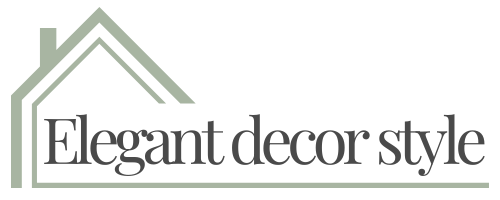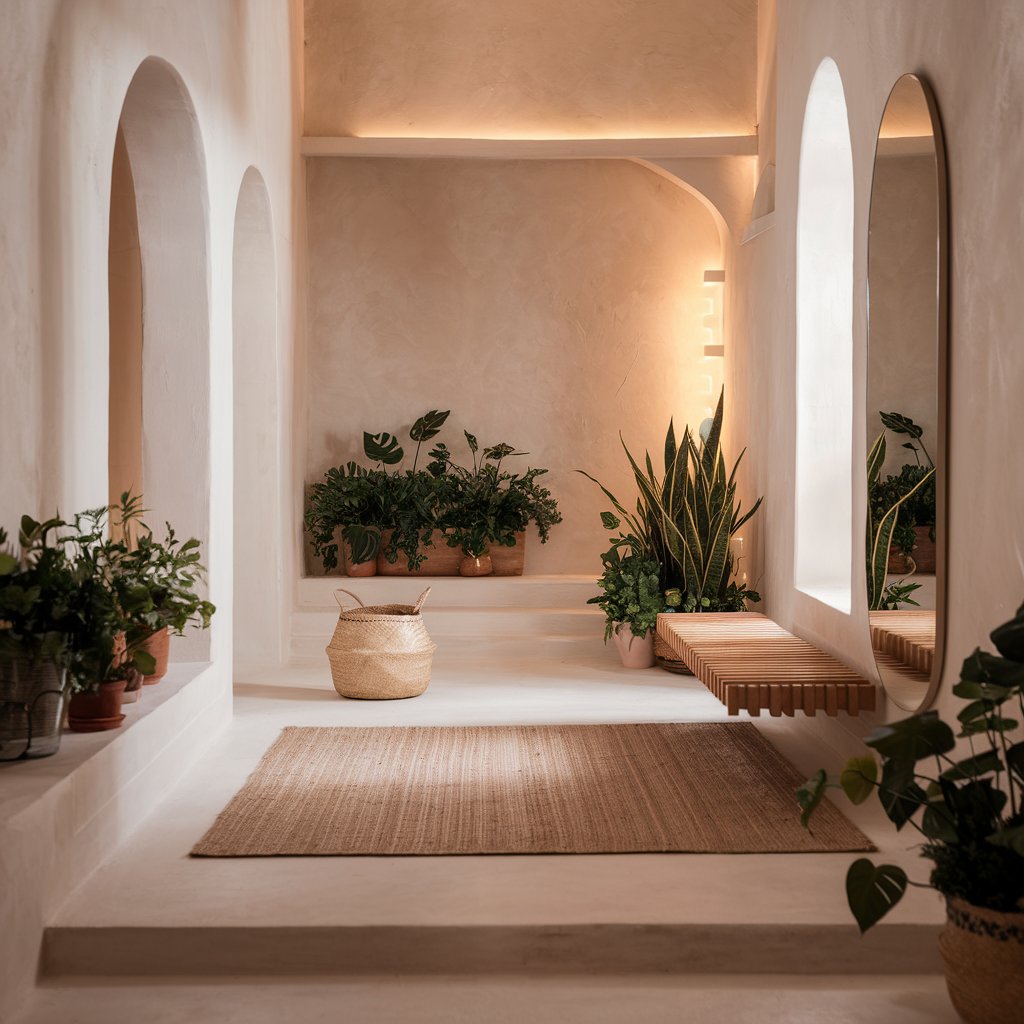Design a Calm & Inviting Entryway: Expert Tips for Creating a Welcoming Home
Table of Contents
Introduction
The entryway is the first thing people see when they step into your home, yet it’s often the most overlooked space. A well-designed entryway doesn’t just serve a functional purpose—it sets the tone for the rest of your home and creates a lasting first impression. In fact, a survey of home buyers found that 63% of them consider the entryway the most important aspect of their home’s first impression.
Whether you have a spacious foyer or a compact hallway, designing a calm and inviting entryway is key to making your guests feel welcome. In this post, we’ll explore expert tips and tricks to help you create a stylish and serene entryway that balances form and function. From furniture choices to color palettes, you’ll learn how to design an entryway that makes a great first impression while reflecting your personal style.
Outline
1. Understand the Purpose of Your Entryway
- First Impressions Matter: How the entryway sets the tone for your home.
- Functional vs. Aesthetic Design: Striking a balance between style and usability.
- Consider Your Lifestyle Needs: Design around your day-to-day activities.
Table: Key Functions of an Entryway
| Function | Examples |
| Storage | Hooks, shoe racks, baskets |
| Seating | Benches, stools, ottomans |
| Aesthetic Appeal | Artwork, decorative lighting, mirrors |
2. Choose the Right Color Scheme
- Neutral Tones for Calmness: Creating a soothing atmosphere.
- Accent Colors for Personality: Adding warmth with bolder hues.
- Consider Lighting: How natural light and wall color interact.
Table: Color Schemes for Entryways
| Color Palette | Mood/Effect | Best for |
| Light Neutrals | Calming, clean, serene | Small spaces, modern homes |
| Bold Accents | Warm, energetic, inviting | Large spaces, eclectic décor |
| Soft Pastels | Fresh, light, airy | Coastal, minimalistic, or vintage |
3. Select the Right Furniture
- Storage Solutions: Practical furniture pieces that also look good.
- Entryway Bench: The perfect piece for adding seating and style.
- Console Table: A versatile, stylish way to add storage and display space.
Table: Best Furniture for Entryways
| Furniture | Functionality | Best for |
| Entryway Bench | Seating and storage for shoes and bags | Small or large spaces, multi-purpose |
| Console Table | Displaying decor and providing storage | Modern, traditional, or rustic styles |
| Coat Rack or Hooks | Storing coats, bags, and accessories | Smaller spaces, minimalist designs |
4. Lighting: The Key to Ambiance
- Natural Lighting: Make the most of natural light with the right window treatments.
- Statement Lighting Fixtures: Choosing the right chandelier or pendant light.
- Layering Light: Combine ambient, task, and accent lighting.
5. Create Visual Interest with Art and Decor
- Artwork as a Focal Point: Use one large piece or a gallery wall.
- Mirrors for Reflection and Light: Adding functionality while increasing space.
- Textiles for Warmth: Rugs, throws, and pillows that complement your color scheme.
Table: Decorative Accents for Entryways
| Accessory | Functionality | Best Use |
| Artwork | Creates focal points and adds personality | Above a console table, on a wall |
| Mirrors | Adds depth, light, and style | Small entryways, traditional homes |
| Rugs | Adds comfort and visual warmth | Under a bench, by the door |
6. Maximize Space in Smaller Entryways
- Vertical Storage Solutions: Wall-mounted shelves and hooks.
- Use of Multi-functional Furniture: Foldable or stackable options.
- Optical Illusions: Tricks to make the space feel larger.
Table: Space-Saving Tips for Small Entryways
| Tip | Description | Example Use |
| Vertical Storage | Use walls for hooks or shelves | Wall-mounted coat rack or shelf |
| Multi-functional Furniture | Pieces that serve multiple purposes | Bench with hidden storage |
| Mirrors for Depth | Create the illusion of space | Large mirror to reflect light |
7. Seasonal Design: Refresh Your Entryway Year-Round
- Spring and Summer: Light colors, florals, and natural textures.
- Fall and Winter: Warmth with darker tones, rich textures, and cozy details.
- Holiday Touches: Seasonal decorations without overdoing it.
8. Personalize Your Entryway
- Monogrammed Items: Custom touches like rugs or throw pillows.
- Family Photos: Create a personal gallery wall or framed display.
- Sentimental Decor: Items that tell a story or reflect your personality.
Choose the Right Color Scheme
When designing your entryway, one of the most impactful decisions you’ll make is choosing the color scheme. The right colors can set the mood for the entire space. Neutral tones such as soft whites, beiges, and grays are popular because they create a calm and welcoming atmosphere. These tones work well in smaller entryways, as they make the space feel larger and airier.
Pro Tip: Add depth and warmth to neutral walls by incorporating accent colors through accessories like throw pillows, artwork, or a colorful rug. Bold hues like navy, mustard yellow, or deep green can inject personality into an otherwise neutral space.
However, if you have a larger entryway or a space that receives a lot of natural light, you might want to experiment with deeper or bolder colors. Accent walls or contrasting colors can add energy and dimension, making the entryway feel vibrant and full of life.
Table: Color Schemes for Entryways
| Color Palette | Mood/Effect | Best for |
| Light Neutrals | Calming, clean, serene | Small spaces, modern homes |
| Bold Accents | Warm, energetic, inviting | Large spaces, eclectic décor |
| Soft Pastels | Fresh, light, airy | Coastal, minimalistic, or vintage |
Lighting: The Key to Ambiance
Lighting is often an underestimated aspect of entryway design, but it plays a crucial role in creating ambiance. Natural light is always ideal, so maximize the windows in your entryway with sheer curtains or blinds that allow sunlight to stream in while still offering some privacy.
For areas that lack natural light, consider adding statement lighting fixtures such as pendant lights, chandeliers, or sconces. These not only brighten up the space but can also become focal points that add a touch of elegance.
Pro Tip: Layering light is essential. Use ambient lighting for overall illumination, task lighting for practical needs like reading or finding keys, and accent lighting to highlight artwork or architectural features.
Table: Lighting Options for Entryways
| Lighting Type | Functionality | Best Use |
| Ambient Lighting | Provides general illumination | Overhead fixtures or recessed lighting |
| Task Lighting | Focused lighting for practical tasks | Pendant light or sconces for key areas |
| Accent Lighting | Highlights decor or features | Track lighting or wall-mounted lamps |
Conclusion
Designing a calm and inviting entryway is all about balance—combining aesthetics with functionality to create a space that welcomes you and your guests. By choosing the right color scheme, furniture, lighting, and decor, you can transform even the smallest of spaces into a peaceful oasis that sets the tone for the rest of your home. Whether you prefer a minimalist look or want to add personal touches, these expert tips will help you design an entryway that reflects your style while providing practical solutions for daily use.

